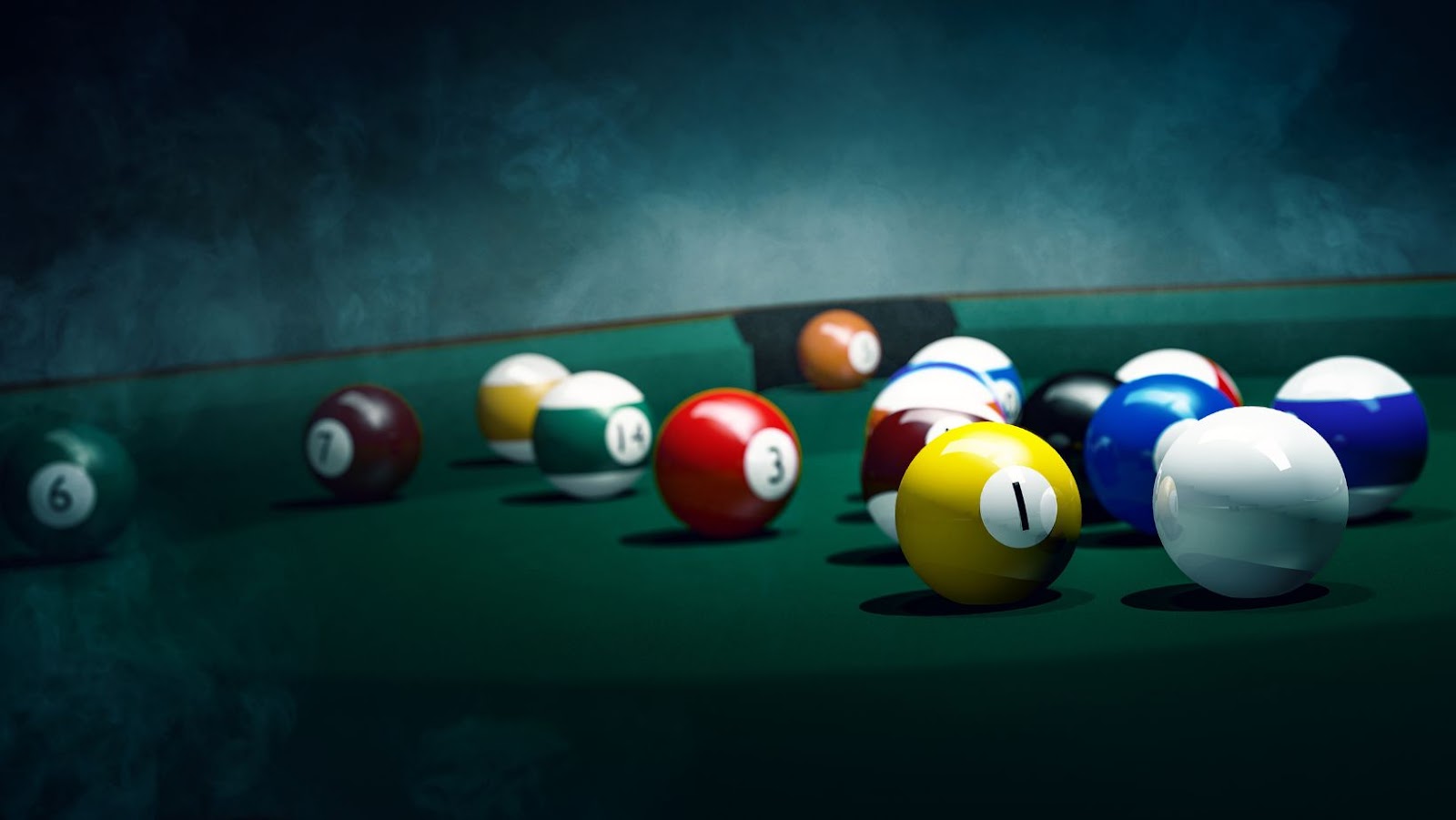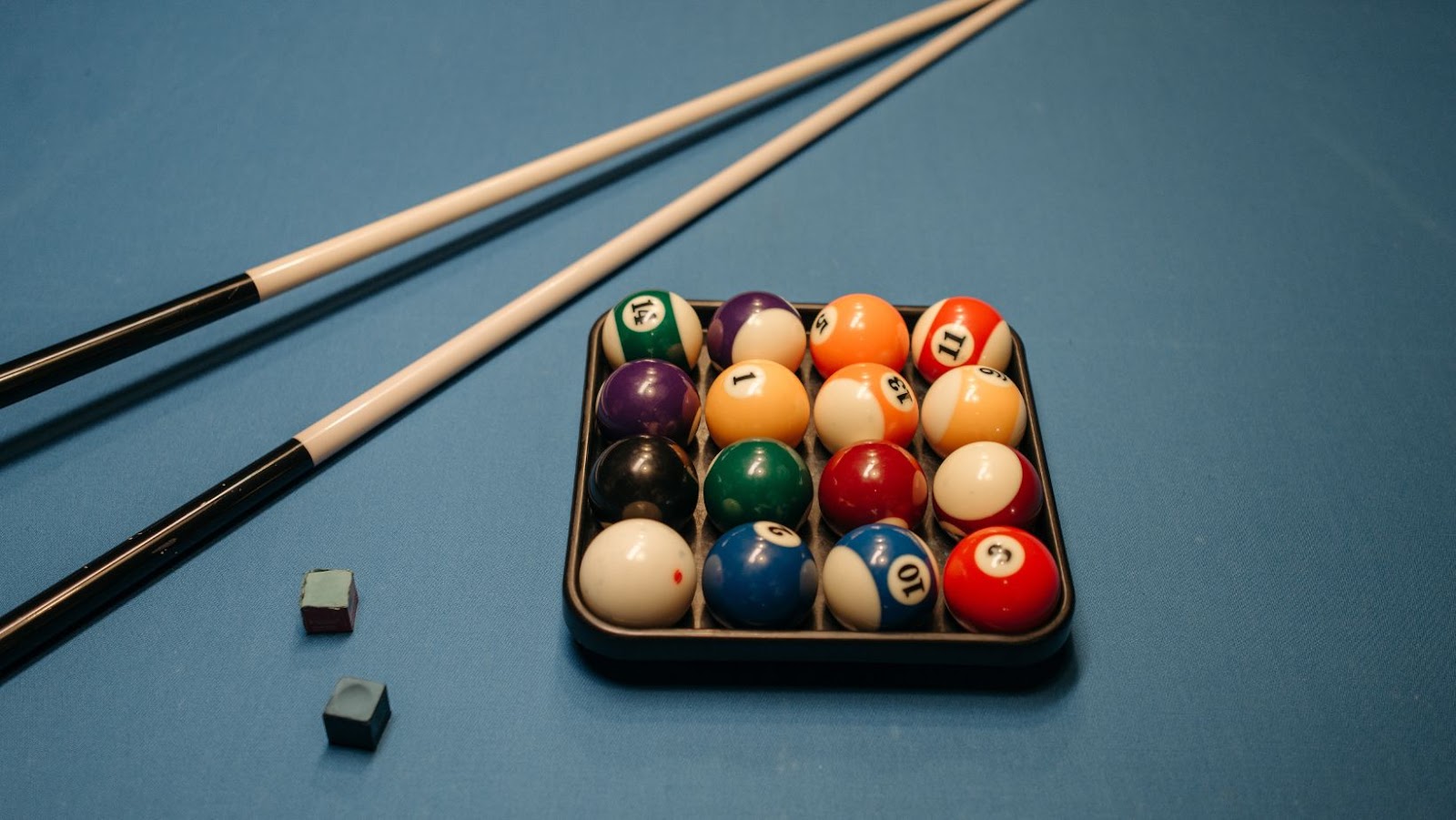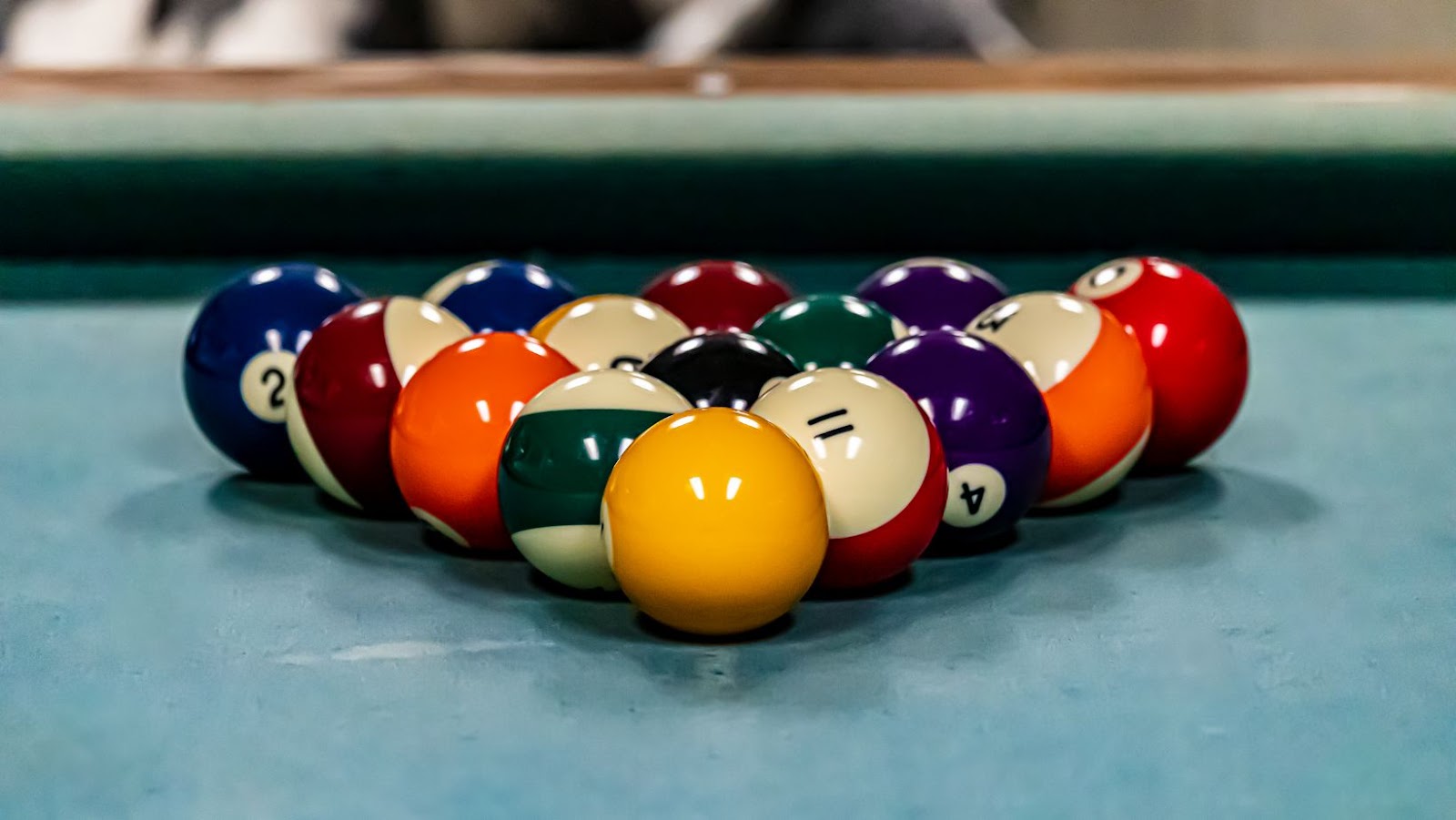
Are you an avid pool player curious about what your game is made of?
Billiard balls are a key component to playing the beloved game, but what exactly do they consist of? This article provides an in-depth look into what makes billiard balls tick.
Introduction to Billiard Balls
Billiard balls are essential equipment for playing cue sports. Typically they are solid and round, and come in a variety of sizes and materials depending on the game being played. While the construction of billiard balls has evolved over time, there are some timeless materials used to make them.
The original billiard balls were made from clay mixtures (clay + water = clay paste), which were wrapped with thread or yarn. The tightly wound thread was then covered with many layers of paint or polish to complete each ball’s distinctive look. It’s a labor-intensive process that dates back at least 150 years, with various hand-painted ornamental designs used for popularization among wealthy snooker aficionados at the turn of the 20th century.
Today, billiard balls usually consist of plastic or phenolic resin – such as polyester resin and Bakelite – mixed together with white fillers such as chalk powder or stone powder, then molded into shape and cured through either heat-curing or air-drying processes. Adhesive is then applied along the surface. A combination of abrasives such as silicon carbide is manually ground over the surface of each billiard ball, creating uniformity in size and shape for maximum reliability during gameplay play. Finally, additives may be used to promote good friction capabilities between two pool cues that rub against each other at contact point during shots.
History of Billiard Balls
The origins of billiard balls date back to the 15th century in Northern Europe. They were originally made from various types of hardwood, such as boxwood and beech. As different techniques for shaping and carving wood evolved over time, so did the quality and appearance of the billiard balls.
During the 19th century, ivory became a popular material for making billiard balls due to its hardness, stability, whiteness and ability to take a nice polish. From 1840 on, most billiard balls were made from elephant ivory that was imported into France and England. However, this practice eventually came under fire as it had a significant environmental impact due to excessive elephant poaching in Africa.
As an alternative to ivory, other materials such as clay composite materials began to be used instead in 1890s by John Wesley Hyatt’s firm while they experimented with celluloid as a substitute material. This marked an important turning point in the history of billiards since celluloid widely replaced ivory as raw material for manufacturing balls at this time – a trend that continues until this day when many pool ball sets made of polymers or polyester resin are found on the market.
Different Types of Billiard Balls
Billiard balls are an essential part of the game and come in a variety of materials and styles. The most popular and widely known balls are made from Polyurethane, Phenolic Resin, and Clay Composites. Each material has its own benefits and drawbacks depending on the game being played. Let’s take a look at each material in more detail below:
Polyurethane: Polyurethane balls are the most common type of billiard ball on the market today, as they are durable, scratch resistant, and maintain tight roundness over time. This type of billiard ball provides excellent response to spin and cue strikes across various playing conditions.
Phenolic Resin: Phenolic resin is a stiffer game ball that can be used with some cloths such as those found on English tables. This type of material offers less deflection off bank shots but generally takes longer to break in than other types of balls due to its composition.
Clay Composites: Clay composites are considered by many professional players as the optimal choice for serious play as these articles retain true circularity during play for long periods of time with minimal deformation or compression when colliding against one another or when hitting a rail shot or cushion rubber surface. Keep in mind that clay composite billiards demand considerable caution when handling them as careless drops can quickly cause damage due to their construction using clay mixtures mixed with resin binders mixed with impurities such as quartz sand or shell fragments which give them superior consistency over other types of materials used in pool table manufacturing products.
What are Billiard Balls Made Out Of
The composition of billiard balls has changed over time and varies depending on the type of pool game being played. The traditional material used to make billiard balls is phenolic resin, an extremely durable plastic material capable of withstanding the rigors of pool gameplay. Other materials used include clay composite resin and polyester, as well as ivory for most antique sets.

Phenolic resin is very inexpensive in comparison to other materials and offers superior performance in comparison to other materials. It is not affected by varying temperatures and the balls can last for a long time without showing signs of wear or tear. This material also ensures that billiard balls maintain their size and shape for years of use.
Clay composite resin (CFR) provides players with an even more consistent roll than phenolic resin, allowing them to be more accurate with their shots. Additionally, CFR produces a less-harsh sound when impacting rails or the pockets compared to phenolic resin. However, CFR is subject to weathering over time and is more expensive than phenolic resin so it often only used in tournament-grade billiards games and custom sets made by professional makers.
Polyester and similar synthetic materials are also common choices for modern billiard ball sets as they are much harder than CFR or phenolic balls, thereby producing longer rolls that can lack spin or backspin, rendering them somewhat unpredictable after hitting either a rail or a pocket due to its lesser rebound resistance than traditional materials like CFR or park phenol resins. As such they are typically employed in bar table games rather than those meant for tournament play.
Ivory was the traditional material used to make billiard balls prior to World War II before it was replaced with synthetic alternatives due to difficulty in obtaining enough ivory for mass production purposes as well as ethical concerns about its harvesting from animals across the globe such as elephants. Though these antique ivory sets are generally still in existence they are no longer manufactured making them highly valued collectables amongst aficionados of pool games worldwide given their unique nature when compared with similar synthetic alternatives still found today on most retail shelves across many nations around the globe each nation having its own preferences when it comes down encapsulating style & aesthetic preferences within game equipment itself.
Manufacturing Process of Billiard Balls
The manufacturing process of billiard balls has changed and improved over the centuries, but the four main stages remain largely unchanged. Billiard balls are made from a combination of polyester and phenolic resin, two strong and durable materials that provide resilience for difficult shots.
The manufacturing process begins with pouring melted polyester and phenolic resin into specially-designed molds. Once cooled, the hardened material is cut into small strips and machined down to their desired size. To ensure consistency, each strip is tested before proceeding to the next step, which involves gluing or bonding the strips together so that they form a solid piece. Finally, the pieces are hand polished to perfection. To finish them off, each individual billiard ball is dyed to attain its classic color.
Beyond giving billiard balls their iconic feel and design, polyester and phenolic resin make them resistant to wear and tear on even hard wood surfaces as well as providing a more accurate response when striking other objects such as pocket points or rail cushions on precision pool tables. With care and timely replacement when needed, your set of billiard balls should last you a good few decades in perfect condition!
Benefits of Different Materials Used in Billiard Balls
Billiard balls come in a variety of materials, each one offering its own set of benefits. Different materials are used for specific types of billiard gaming. Knowing the advantages and disadvantages of each material can help you make the best choice when selecting your set of pool balls.
Plastic billiard balls are durable, low-cost and readily available. They come in a variety of colors and can withstand some play without showing visible signs of wear. Plastic balls also give players a consistent roll that most recreational players enjoy, allowing a better control over shotmaking than with some other ball materials.
Clay billiard balls are considered the standard for serious to professional play as they have less friction on the table surfaces, leading to a truer roll than with plastic or composite material billiard ball sets. Higher-grade clay sets will last longer and provide more consistent game play; however, clay cues may chip or split over time due to damage from hard hits or impacts with other objects during play.
Composite resin-based materials have gained in popularity recently because they combine features from both plastic and clay sets — durability and consistently true rolls respectively — while adding several unique benefits like being magnetic field resistant, which can be important for those who want precise accuracy and control when playing competitively or during tournament events such as snooker leagues. Composite resin sets also won’t chip like clay so they last significantly longer under normal competitive conditions.
Care and Maintenance of Billiard Balls
Maintaining your billiard balls is an important part of making sure they remain in good condition. It’s also necessary to ensure you’re playing with properly balanced and weighted balls that won’t interfere with the integrity of the game. To meet these standards, billiard balls are made out of a variety of materials including phenolic resin, plastic, wood or clay.
Aside from avoiding damage during play, regular cleaning and conditioning can help to extend the life of your billiard balls. To do so, avoid using strong detergents or abrasive cleaners that could potentially damage the surface of the ball. Instead, use a soft cloth with mild soap and water. This will lift away dirt and other residue without diminishing the quality of your equipment. Afterward it’s best to dry the surface with a clean cloth before returning them to their rack or table. Completing this routine regularly can help keep your billiard table looking as nice as when you first purchased it!

The materials used to make billiard balls have changed over time, but nowadays most balls are made of phenolic resin. This type of material is very hard and resilient, which makes it a superior choice for creating billiard balls that are sturdy and can withstand the force of contact without being damaged.
Phenolic resin is also heat-resistant, weather-resistant, and impact-resistant due to its strong mechanical properties that make it ideal for making precision products such as billiard balls. Moreover, phenolic resin does not react with water or other foreign materials and is non-toxic, so it can be safely used in the manufacturing process of billiard balls.




